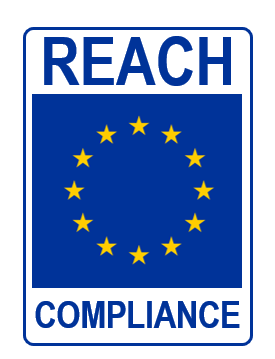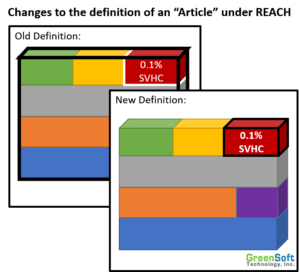EU REACH
November 6, 2015 | Written by GreenSoft Technology, Inc.
What You Need to Know About the Ruling on REACH SVHC Thresholds
 Last month the European Court of Justice (ECJ) ruled on articles of the REACH regulation pertaining to SVHC thresholds.
Last month the European Court of Justice (ECJ) ruled on articles of the REACH regulation pertaining to SVHC thresholds.
Contrary to the interpretation of the legislation adopted by the European Commission and a guide published by the European Chemicals Agency (ECHA), the ECJ ruling sided with the five Member States and Norway that contested the European Commission and ECHA's interpretation.
The European Commission and ECHA previously interpreted the REACH legislation to mean that companies are required to communicate the presence of the SVHC to their customers and provide required substance information when a Substance of Very High Concern (SVHC) exceeds 0.1% in the entire article/product. Additionally, if the total amount for all units imported into or manufactured within the EU of the specific SVHC contained in the product exceeds one metric tonne per year, the company may also be required to notify ECHA.
But last month the ECJ ruled that this 0.1% threshold requiring companies to communicate information to their customers and/or notify ECHA actually applies to each component within a complex product containing multiple articles. Under this interpretation, companies are required to notify ECHA anytime an SVHC exceeds 0.1% in any one component within the article/product.
For example, below is an article/product with 7 components. The red component has an SVHC weight of 0.1%, but the entire article has an SVHC weight of less than 0.1%.

Once an Article, Always an Article
Additionally, any given component that a manufacturer purchases from a supplier may be made up of sub-assemblies that the manufacturer isn't aware of. These sub-assemblies must be compliant based on their own component level as well.
This new interpretation is sometimes referred to as the "Once an Article, Always an Article" approach. What this means is that any part or component that met the definition of an article before being incorporated into the final product must be evaluated as a separate article for the purpose of determining REACH SVHC concentrations.
This will cause the compliance status of some products which were not previously subject to REACH SVHC communication and notification requirements to change. Companies should take care to ensure previous product validations are revisited, and that their supply chain communication strategy (both with suppliers and customers) is updated to take the new interpretation into account.
For GreenSoft Customers
GreenSoft Technology, Inc. already collects Full Material Data (FMD) on each component within an article for our Data Services customers, so we already know the percentage of SVHC chemicals within each component of your articles or products.
Still, we are updating the verbiage on the compliance documentation that we send to your suppliers to specifically state that compliance with REACH SVHC regulations is determined on the component and sub-assembly level. So when suppliers sign the document to certify the compliance of their products, the document will clearly state that compliance depends on the SVHC level of the sub-assembly parts of the component in addition to the component.
We Can Help
Is your organization struggling with the impact of this change? We can help. Greensoft is already helping lots of companies to collect all the required supplier data and is providing product level evaluations for REACH SVHC at the component level as required by this new regulation interpretation. Additionally, GreenSoft's award winning Green Data Manager software allows users to produce their own REACH SVHC component level product reports and disclosures in real time. For a free presentation on how GreenSoft can assist you in meeting these new requirements, as well as many others, contact us.
The full text of the ECJ decision is available online. ECHA has not yet released a detailed statement or a new guide for manufacturers, but we will notify our readers at the time when ECHA publishes that information.

